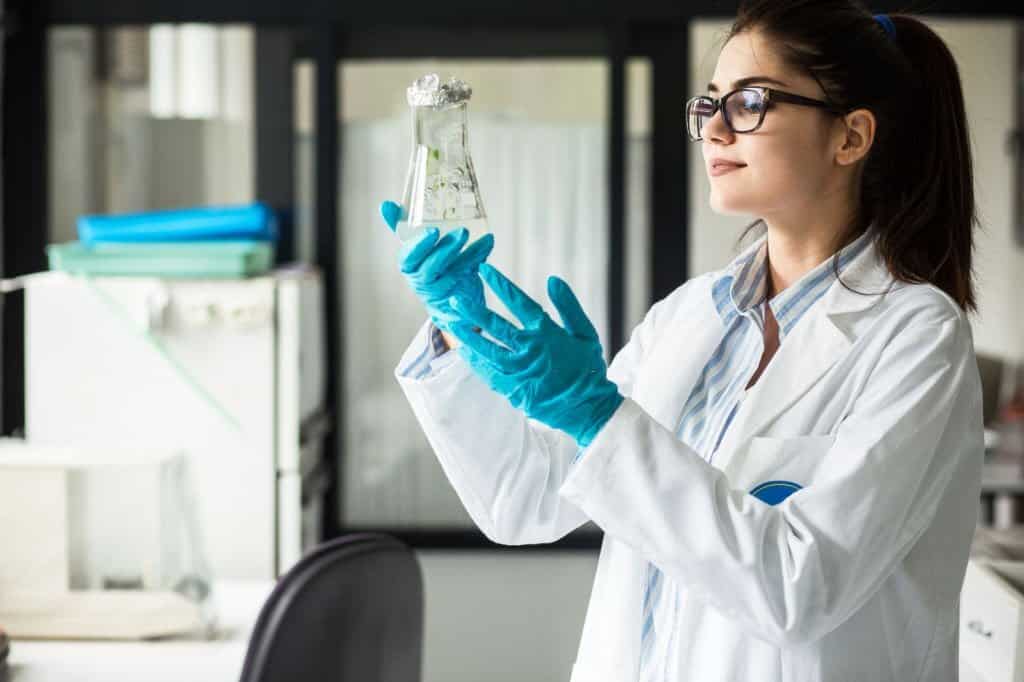Why are lightweight disposable gloves provided in the teaching labs? Well, here’s the short answer: Safety.
Just as workers are required to wear their protective gear at the workplace, students are also expected to wear proper laboratory attire in school. In both instances, professionals and students are exposed to chemicals and using equipment that can potentially cause harm.
That said, let me expound more on how lightweight disposable gloves can protect students and teachers alike in the sections below.
Table of Contents
Why Should I Wear Disposable Gloves During Laboratory Classes?
Whether you’re in high school or university, you have to take some science classes with activities held at the laboratory. During these classes, your teacher will demonstrate experiments and ask you to do one independently.
Remember, accidents can happen no matter how careful you are. Hence, your instructor will require you to don specific types of personal protective equipment that are appropriate to the experiment.
Lab coats, for instance, protect your skin from splashes of chemicals. Likewise, goggles keep chemicals, particles, and other impurities entering your eyes. However, your hands are the ones that hold the chemicals, which is why wearing gloves in the laboratory is a must.
Universities that offer scientific and technological education normally would publish these requirements on their website for the students to see.
One example is this page ( https://labcoats.mit.edu/news/what-wear-and-why-lab-1) from the Massachusetts Institute of Technology’s (MIT) website. Here, you will see that MIT clearly describes basic lab attire and basic lab personal protective equipment (PPE) that the students and researchers are expected to wear.
What Kind of Gloves Can I Use in a Laboratory?
Generally speaking, disposable rubber gloves are in the thin and lightweight range. Still, this type of hand protection comes with different levels of thicknesses. Gloves used in laboratories are normally made of nitrile, latex, neoprene, or polyvinyl chloride.
Latex gloves are widely available in retail stores and pharmacies. Besides giving reliable protection against water-based or biological hazards, they offer an optimal level of tactile sensitivity. However, it causes allergies for some people.
Nitrile gloves, on the other hand, are preferred by many workers across various industries because of their durability. Furthermore, they do not cause allergies due to the absence of latex.
Meanwhile, this article on gloves.com reveals that neoprene gloves are better for outdoor experiments thanks to their chemical and weather-resistant properties.
Polyvinyl chloride, or “vinyl” gloves, are also used in labs but they are intended for non-hazardous tasks. Vinyl is indeed cheaper than most options but it is also not as durable as the other materials.
Ansell’s Microflex gloves are another great alternative. Despite being one of the thinnest disposable gloves, it can effectively protect the wearer against chemicals without compromising dexterity and comfort.
Which Color of Gloves Should I Choose?
There is no scientific evidence that certain glove colors perform better than the others, as in this article on Your Glove Source. However, the colors offer some practical uses.
By way of example, black disposable gloves made of nitrile are commonly used in automotive applications, hairdressing, or the tattoo industry. According to this Wise Geek article, the color hides the grime, oil, and ink well enough.
In some laboratory applications, the colors help workers tell apart the glove material easily. Just by looking at the white glove, the worker can tell that it’s vinyl. Meanwhile, the blue ones are made of nitrile.
Furthermore, dark-colored gloves allow the wearer to quickly spot hazardous powders or substances that got onto their hands.
Things to Remember When Using Disposable Gloves in Teaching Labs
- Familiarize yourself with the laboratory’s safety protocols to arm yourself with appropriate protection.
- Learn the proper way of removing your gloves. While this technique is taught in class, you can also check out this video
- Discard the gloves when they are punctured or after use. Gloves.com suggests that you can minimize contamination by putting the used gloves in a bag and securely tying a knot before chucking them in the trash bin.
- Another reminder from Construction Informer is to remove your gloves when you need to touch items that are not part of your experiments, like your phone or doorknobs.
Conclusion
Keep in mind that this article only seeks to answer your question, “Why are lightweight disposable gloves provided in the teaching labs?” Hence, I did not dive into the details of what each school or workplace requires.
That said, the information above offers an overview of different disposable gloves that you can use for experiments, as well as the purpose of wearing certain types of hand protection.
Although you find plenty of references online, I still encourage you to speak with your professor if you have questions regarding lab attire and protective equipment.

Veronica is our content editor. She is a talent in delivery. Her main work is editing and writing articles that are both informative and simple to follow. She is in charge of synthesizing our understanding of what personal protection equipment (PPE) is needed in each job, how to best apply it, and how to visualize that equipment.




